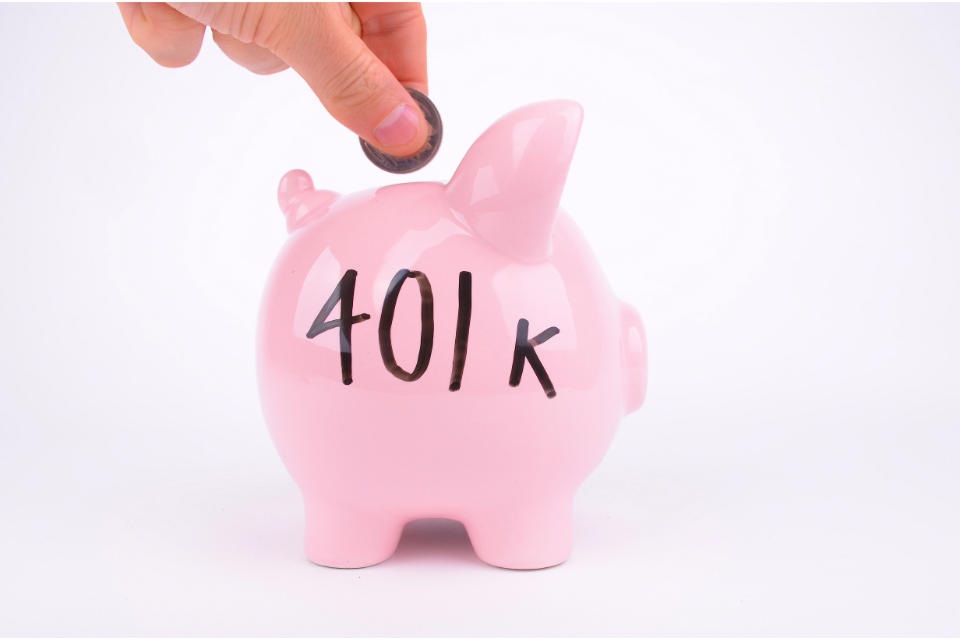A 401(k) plan for small businesses is a popular and valuable employee perk that many organisations provide to their employees.
A 401(k) is a company-sponsored, tax-deferred retirement plan in which employees' contributions are deducted from their paychecks and deposited into their 401(k) accounts.
Employees will get regular payouts to supplement their income when they retire, and they will not pay taxes until then if their 401(k) is filled with pretax monies.
Let's go a little further to learn more about 401(k) and other related issues.
Table of Content
- 401(k): The Basics
- As A Small Business, Is It Necessary to Offer 401(k) As An Employee Benefit?
- How Does 401(k) Work?
- Traditional 401(k)
- Roth 401(k)
- Traditional 401(k) Vs Roth 401(k): An In-Depth Discussion
- Advantages and Disadvantages of 401(k)
- Advantages of 401(k)
- Disadvantages of 401(k)
- A Quick Introduction to Required Minimum Distributions (RMDs)
- Different Conditions That Occur to Your 401(k) When You Leave The Job
- Final Thoughts
- How Deskera Can Assist You?
- Key Takeaways
401(k): The Basics
A 401(k) is a retirement savings account. In the United States, it was initially established in 1978 as part of the Revenue Act. This allowed taxpayers to defer remuneration from stock options or bonuses tax-free. The government changed the laws around 401(k) plans in 1981, allowing employees to make direct contributions to their 401(k) plans through salary deductions.
Any 401(k) contributions you make today are taken from your pre-tax paycheck and placed straight into your retirement account. These contributions are tax-deductible and reduce your taxable income for the year, decreasing your total tax burden at the end of the year.
Note that 401(k) contributions are separate from Medicare and Social Security contributions, which are deducted from your salary as well.
As A Small Business, Is It Necessary to Offer 401(k) As An Employee Benefit?
No, offering a 401(k) program isn't required, yet it is a smart way to keep employees.
Assuring your employees that their retirement savings accounts are secure can boost their work happiness and performance. The average return on a 401(k) is between 8% and 12%. In comparison, the current average return on a 20-year government bond is 1.9%.
You don't have to provide a 401(k) just because you don't have to offer any retirement savings programmes. California, for example, requires some firms to assist employees in saving for retirement.
A 401(k), Roth IRA, or other sorts of retirement plan may usually meet these criteria, and many states are introducing public choices that will meet your legal needs.
How Does 401(k) Work?
The United States Congress made the 401(k) to motivate Americans to save for retirement. One of the advantages they provide is tax savings.
There are two fundamental options available, each with its own set of tax advantages.
Traditional 401(k)
Employee contributions to a traditional 401(k) are deducted from gross income, meaning they come out of the employee's paycheck before taxes are deducted. Consequently, the entire amount of contributions for the year is deducted from the employee's taxable income, which may then be recorded as a tax deduction for that tax year. There are no taxes owed on the money donated or earned until the employee withdraws it, which is generally in retirement.
Roth 401(k)
Contributions to a Roth 401(k) are taken from an employee's after-tax income, meaning contributions are made after income taxes have been subtracted. Consequently, there is no tax deduction in the year of contribution. There are no additional taxes required on the employee's contribution or the investment earnings when the money is taken at retirement.
However, Roth accounts are not available at all companies. If the Roth is available, the employee can choose one or the other, or a combination of both, up to the yearly tax-deductible contribution limitations.
Traditional 401(k) Vs Roth 401(k): An In-Depth Discussion
When 401(k) plans were first introduced in 1978, employers and workers had just one option: the classic 401(k). Then, in 2006, Roth 401(k)s were available. Former United States Senator William Roth of Delaware was the major proponent of the 1997 legislation that established the Roth IRA.
While Roth 401(k)s were slow to take on, they are now widely available. As a result, employees frequently have to choose between Roth and regular retirement plans.
To reap the benefits of the immediate tax savings, employees who intend to be in a lower marginal tax bracket after retirement should normally pick a standard 401(k).
Employees who intend to be in a higher tax rate after retirement, on the other hand, may choose the Roth to avoid paying taxes on their funds later. Also essential if the Roth has years to grow—is that there really is no tax on withdrawals, which implies that all of the money contributed grows tax-free over decades.
In practice, a Roth 401(k) plan decreases your immediate spending power more than a standard 401(k). If you have a limited budget, this is important.
Since no one knows what tax rates will be in the future, neither sort of 401(k) is guaranteed. As a result, many financial gurus advise clients to hedge their bets by investing a portion of their money in each.
Advantages and Disadvantages of 401(k)
Advantages of 401(k)
401(k)s provide several advantages to employees, including:
· Employer-sponsored tax advantages
· Contribution limitations are high.
· Contributions beyond 72 years of age
· Protection from creditors
We'll look at these 401(k) benefits in more detail below.
· 401(k) Taxes
The tax advantages of a 401(k) start with the fact that you make pre-tax contributions. That means you may deduct your contributions in the year you made them, lowering your annual taxable income.
Your 401(k) earnings grow tax-deferred, which adds to the advantage. That means the income and capital gains that collect in your 401(k) aren't taxed until you start taking distributions.
If you'll be in a lower tax band in retirement (when you take money out) than when you make the contributions, the tax treatment can be a big benefit.
· 401(k) Match
Some companies may match your contributions to your 401(k) plan. Some even have a profit-sharing provision, in which the corporation pays a percentage of its revenues to the pot. If your firm gives one or both of these benefits, take advantage of them—they're effectively free money.
Here's how those employee benefits may help you. Many employers will match up to 50% of the first 6% of your 401(k) contributions (k). Assume you make $45,000 each year. Your company will match 50% of your 401(k) contribution if you contribute 6% of your yearly earnings ($2,700). That's $1,350 in free cash.
Some businesses even go one step further and match your payments dollar for dollar up to the first 6%, which in this case would add another $2,700 to your yearly contributions, effectively doubling them.
· 401(k) Contribution Limits
A 401(k) allows you to save far more money each year than an IRA. The 401(k) contribution limits for 2021 are $19,500 and $26,000, respectively (with a $6,500 catch-up for individuals 50 and older). This sum increases to $20,500 in 2022, plus the $6,500 catch-up.
Your employer may also contribute. The contribution ceiling is $58,000 in 2021, or $64,500 with the $6,500 catch-up, and $61,000 with the $6,500 catch-up amount in 2022.
· 401(k) Contributions After Age 72
Even if you're still working, you won't be able to contribute to some retirement plans until you turn 72. That implies that any money you gave before taxes will be taxed at your current rate. And it'll almost certainly be greater than the rate you'll pay once you retire.
This disadvantage is not present with 401(k)s. You can keep contributing to them as long as you're still employed. Even better, if you own less than 5% of the company where you work, you can avoid getting obligatory distributions from the plan while you're working.
· Shelter From Creditors
It's beneficial to have your money in areas where creditors cannot get it if you get into financial problems. 401(k)s, as it turns out, provide great creditor protection. This is because the Employee Retirement Income Security Act (ERISA) governs pension programmes, and ERISA accounts are normally shielded from judgement creditors.
401(k)s also provide some security from federal tax liens, which are government claims against a taxpayer's assets due to unpaid back taxes. The IRS finds it difficult to impose a lien on a 401(k) plan since it legally belongs to your company rather than you. Your plan administrators may be allowed to refuse to cooperate with an IRS lien entirely depending on the language in the fine print of your account.
Disadvantages of 401(k)
When you withdraw money out of your 401(k), it is taxed at your current income tax rate. You have limitations on how and when you can take funds from your account.
· Age Requirements
If you take money out of a 401(k) before reaching the age of 5912, you'll be charged a 10% penalty fee as well as any relevant taxes.
· Mandatory Withdrawals
You must start taking required minimum distributions (RMDs) from the plan at the age of 72. The RMD was formerly 7012, but after the passing of the Setting Every Community Up For Retirement Enhancement (SECURE) Act in December 2019, it is now 72.
You don't have to accept RMDs from your current employer's plan if you're still working at 72. If you have any 401(k)s from previous companies, you will need to start withdrawing from them.
A Quick Introduction to Required Minimum Distributions (RMDs)
After reaching a certain age, traditional 401(k) account holders must make required minimum distributions or RMDs. (In IRS jargon, withdrawals are referred to as "distributions.")
Account owners who have retired beyond the age of 72 must withdraw at least a percentage of their 401(k) plans, depending on IRS calculations based on their life expectancy at the time. (The RMD was 70.5 years old prior to 2020.)
Different Conditions That Occur to Your 401(k) When You Leave The Job
When you leave your job, you have a number of options for your 401(k). It's possible that you'll be allowed to keep your account. You can also transfer the funds from your former 401(k) to your new employer's plan or an individual retirement account (IRA). You can also withdraw some or all of the funds, although this may result in significant tax penalties. Before determining which path to choose, be sure you grasp the details of the possibilities open to you.
Leave it to your previous employer
Most 401(k) plans enable you to leave your money in your 401(k) after you leave your job if you have more than $5,000 invested. Leaving your 401(k) with a former company may be beneficial if you have a significant amount of money saved and enjoy your plan's portfolio. Consider some of the other possibilities if you're prone to forget about the account or aren't thrilled with the plan's investing selections or costs.
Transfer It to Your New Employer
If you've changed employment, find out if your new company has a 401(k), when you'll be eligible to enrol, and whether rollovers are allowed. Before enrolling in a retirement savings plan, many firms require new workers to work a set number of days. Before you roll over, over your previous 401(k), be sure your new account is operational and ready to receive contributions.
It's straightforward to roll over your previous 401(k) to your new employer's plan once you've registered (k). You can have the administrator of the prior plan deposit the balance of your account into the new plan instantly by simply filling out some paperwork. This is referred to as a direct transfer because it eliminates the possibility of owing taxes or missing a deadline.
You can also choose to have the amount of your previous account transferred to your new account in the form of a check, which is known as an indirect rollover. If you're younger than age 5912, you must deposit the money into your new 401(k) within 60 days to avoid paying income tax on the whole sum and a 10% penalty for early withdrawal. An indirect rollover has the disadvantage of your prior employer being compelled to withhold 20% for federal income tax purposes—and potentially state taxes as well.
Transfer It to an IRA
You still have a solid choice if you're not relocating to a new workplace or if your new employer doesn't provide a retirement plan: you can roll your previous 401(k) into an IRA. You'll be responsible for establishing the account with the financial institution of your choosing. The choices are practically endless. That is, you are no longer bound by the alternatives provided by your company.
Take Distributions
After age 5912, you can start drawing qualifying withdrawals from any 401(k), old or new. That is, you can begin withdrawing funds without incurring the 10% tax penalty for early withdrawal.
If you're nearing retirement, now is a good time to start tapping into your funds. You must pay income tax on any distributions you draw from a typical 401(k) at your regular rate.
If you have a designated Roth account, all distributions taken beyond the age of 5912 are tax-free if you have kept the account for at least five years. Only the earnings component of your distributions is taxed if you do not fulfil the five-year minimum.
You can still accept payments from your 401(k) if you retire or change employment before the age of 55. (k). However, in addition to income tax, you'll have to pay a 10% penalty on the taxable component of your distribution—which might be all of it. Those who retire after age 55 but before age 5912 are exempt from the 10% penalty.
When you quit your employment after reaching the age of 72, you must begin drawing RMDs from your 401(k). Your RMD is decided by your account balance and predicted life expectancy.
Get Your Money
You may, of course, simply take the money and flee. Although nothing prevents you from closing an existing 401(k) and receiving a lump-sum dividend, most financial counsellors strongly advise against it. It unnecessarily decreases your retirement funds, and you will be taxed on the full amount.
If you have a substantial amount in an old account, the tax cost of a complete withdrawal might not be worth it. Furthermore, you will almost certainly be liable for the 10% early withdrawal penalty.
Final Thoughts
It's no surprise that the 401(k) is America's most popular employer-sponsored retirement plan. With so many 401(k) perks, it should be a component of your retirement financial strategy, especially if your company matches your contributions.
Don't just sit back and let your 401(k) run on auto-pilot once you've gotten on board. Changes in contribution limits, tax advantages, and your financial needs from year to year make it advisable to assess your plan's performance and any alternatives that may suit you better on a frequent basis.
How Deskera Can Assist You?
As a business, you must be diligent with the employee payroll system. Deskera People allows you to conveniently manage payroll, leave, attendance, and other expenses. Generating payslips for your employees is now easy as the platform also digitizes and automates HR processes.
Key Takeaways
· A 401(k) is a company-sponsored, tax-deferred retirement plan in which employees' contributions are deducted from their paychecks and deposited into their 401(k) accounts.
· In the United States, 401(k) was initially established in 1978 as part of the Revenue Act.
· As a small business, you don't have to provide a 401(k) just because you don't have to offer any retirement savings programmes.
· To reap the benefits of the immediate tax savings, employees who intend to be in a lower marginal tax bracket after retirement normally pick a standard 401(k).
· When you leave your job, you have a number of options for your 401(k). You can transfer the funds to your new employer's plan or an individual retirement account (IRA). You can also withdraw some or all of the funds, although this may result in significant tax penalties.
Related Articles











